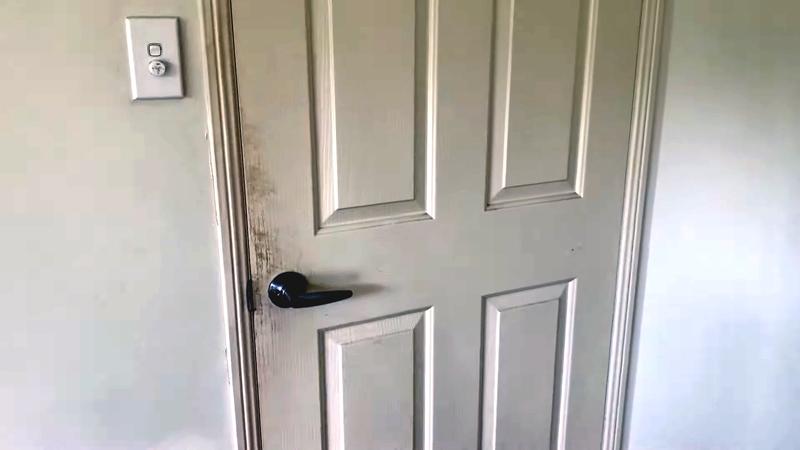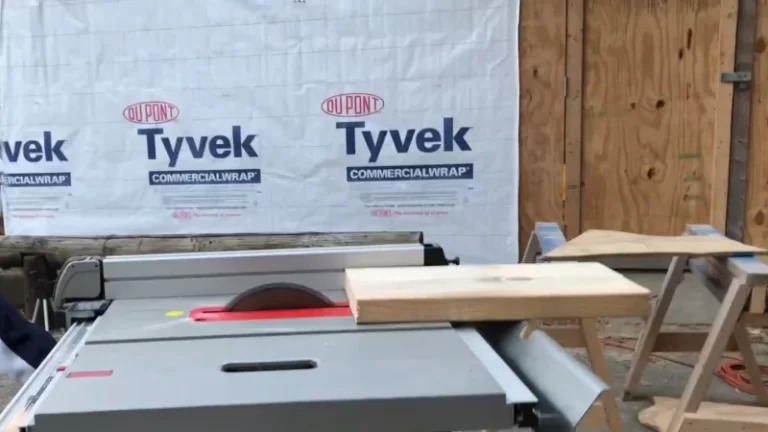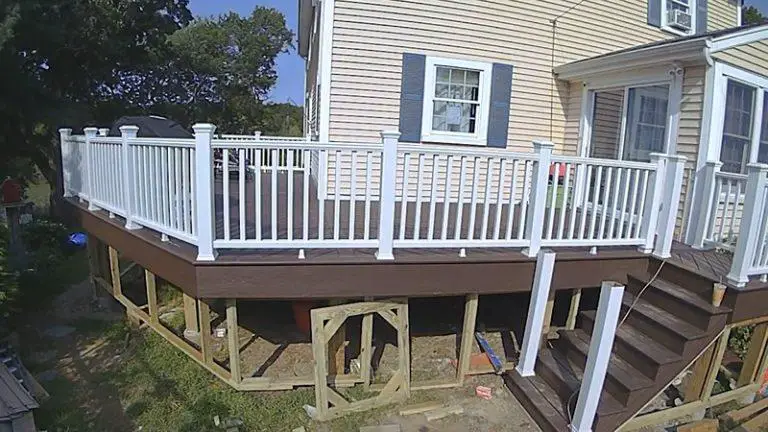Remove Brick Mold From Prehung Door [What to Do?]

Brick molding is a type of trim used to cover the gap between the door frame and the surrounding wall. It is often made of wood, PVC, or composite materials. It is designed to protect the door and the surrounding wall from water damage and give the door a finished, professional appearance.
While many pre-hung doors come with brick molding already installed, it is possible to remove the brick molding if needed. In this article, we will explore the differences between doors with and without brick molding, and discuss the pros and cons of each option.
You'll Learn About
Do Prehung Doors Come with Brick Molding?
Yes, many pre-hung doors come with brick molding already installed. Brick molding is a type of trim used to cover the gap between the door frame and the surrounding wall. It is often made of wood, PVC, or composite materials, and is designed to protect the door and the surrounding wall from water damage and give the door a finished, professional appearance.
Can You Remove a Brick Mold from a Prehung Door?
It is possible to remove brick molding from a prehung door, but it is not a simple process. The brick molding is typically attached to the door frame with nails or screws, and it may be necessary to remove the door from the frame in order to access these fasteners. If the brick molding is badly damaged or has been improperly installed, it may be necessary to remove it in order to repair or replace the door.
How Do I Remove a Brick Mold From a Prehung Door?
To remove brick molding from a prehung door, you will need a hammer, a pry bar, and a screwdriver. Follow these steps:
- Begin by removing any nails or screws that are visible on the surface of the brick molding. Use the hammer to gently tap the nails through the wood, or the screwdriver to loosen the screws.
- Once all of the visible fasteners have been removed, use the pry bar to gently lift the brick molding away from the door frame. Be careful not to damage the door or the frame as you work.
- If the brick molding is still attached to the door frame, use the pry bar to carefully pry it away from the frame, being careful not to damage the frame or the door.
- Once the brick molding has been removed, you may need to fill any holes or gaps in the door frame with wood filler or caulk, in order to prepare the door for re-installation or for the installation of new brick molding.
Are Brick Molds Needed on Prehung Doors?
Brick molds are not strictly necessary for pre-hung doors, but they do serve several important purposes. Some of the benefits of brick molding on prehung doors include:
Longevity
Brick molding helps to protect the door and the surrounding wall from water damage, which can help to extend the life of the door.
Protections Against Severe Weather Conditions
In areas with extreme weather conditions, such as heavy rain or snow, brick molding can help to keep water and other elements out of the door frame, which can help to prevent rot and other types of damage.
Elegant Appearance
Brick molding gives a door a finished, professional appearance, which can enhance the look of the door and the surrounding area.
Additional Safety and Protection
Brick molding can provide an additional layer of protection for doors and windows, helping to keep out unwanted intruders and adding an extra measure of security to the home.
Energy efficiency
Brick molding can help to seal the gap between the door frame and the surrounding wall, which can help to reduce drafts and improve the energy efficiency of the home. This can be especially important in areas with extreme temperatures, where drafts can contribute to high heating and cooling costs.
Noise reduction
In addition to reducing drafts, brick molding can also help to reduce noise from the outside by creating a barrier between the door and the surrounding wall. This can be especially useful for homeowners who live in busy or loud neighborhoods, or who want to create a quiet, peaceful environment inside their home.
Easy maintenance
Brick molding is relatively easy to maintain, as it does not require regular painting or staining like wood trim. This can be a significant advantage for homeowners who do not have the time or inclination to perform regular maintenance on their doors.
Compatibility with other trim
Brick molding can be a good choice for homeowners who want to match the trim on their doors to the trim on their windows or other parts of the home. This can create a cohesive look throughout the home and help to enhance its overall appearance.
Overall, while brick molding is not strictly necessary for prehung doors, it does offer a number of benefits that can enhance the security, appearance, energy efficiency, and noise reduction of the door.
A Door With Brick Mold vs Without Brick Mold
There are many differences between these, we’ll explain each of them.
Additional Layer of Safety for Doors and Windows
One of the main differences between doors with and without brick molding is the level of protection and security they provide.
Doors with brick molding have an additional layer of protection around the frame, which can help to keep out unwanted intruders and provide an extra measure of security for the home. This can be particularly important in areas with high crime rates or in homes with small children or pets.
Contemporary and Fashionable Appearance
Another difference between doors with and without brick molding is their appearance. Doors with brick molding tend to have a more contemporary and fashionable look, which can enhance the overall aesthetic of the door and the surrounding area.
This can be particularly important for homeowners who are looking to update the look of their home or who want to make a statement with their door.
Lifespan
In addition to their appearance and security benefits, doors with brick molding may also have a longer lifespan than doors without brick molding. This is because the brick molding helps to protect the door and the surrounding wall from water damage, which can cause rot and other types of damage over time.
By protecting the door from water and other elements, brick molding can help to extend the life of the door.
Pros of Brickmold on Doors
There are several pros to using brick molding on doors, including:
- Enhanced security: As mentioned above, brick molding provides an additional layer of protection for doors and windows, helping to keep out unwanted intruders and providing an extra measure of security for the home.
- Improved appearance: Brick molding gives doors a finished, professional look, which can enhance the overall aesthetic of the door and the surrounding area.
- Increased lifespan: By protecting the door and the surrounding wall from water damage, brick molding can help to extend the life of the door.
- Enhanced protection from severe weather: In areas with extreme weather conditions, such as heavy rain or snow, brick molding can help to keep water and other elements out of the door frame, which can help to prevent rot and other types of damage.
Cons of Brickmold on Doors
There are a few potential cons to using brick molding on doors, including:
- Cost: Brick molding can be more expensive than other types of trim, which may be a factor for homeowners who are working with a tight budget.
- Difficulty of installation: Installing brick molding can be more difficult than other types of trim, as it requires precise measurements and careful installation to ensure a proper fit. This can make it more difficult for DIYers to install, and may require the services of a professional carpenter or contractor.
- Difficulty of repair or replacement: If the brick molding becomes damaged or needs to be replaced, it can be more difficult than other types of trim due to its location around the door frame. This may require the services of a professional carpenter or contractor to repair or replace the molding.
Pros of Doors Without Brick mold
There are a few potential pros to using doors without brick molding, including:
- Cost: Doors without brick molding may be less expensive than doors with brick molding, as they do not require the additional material and labor costs associated with installing the molding.
- Ease of installation: Doors without brick molding may be easier to install than doors with brick molding, as they do not require the precise measurements and careful installation required for the molding. This can make them a good option for DIYers or for homeowners who want to save on installation costs.
- Ease of repair or replacement: If the door becomes damaged or needs to be replaced, it may be easier to do so without the added complexity of the brick molding. This can save time and money on repairs or replacements.
Cons of Doors Without Brick mold
There are a few potential cons to using doors without brick molding, including:
- Lack of protection: Doors without brick molding may not provide as much protection from water damage or severe weather conditions as doors with brick molding. This can lead to rot or other types of damage to the door or the surrounding wall over time.
- Lack of security: Doors without brick molding may not provide as much security as doors with brick molding, as they do not have the additional layer of protection around the frame. This can be a concern for homeowners who are looking for added security for their home.
- Lack of finished appearance: Doors without brick molding may not have the same finished, professional appearance as doors with brick molding, which can be a concern for homeowners who are looking to enhance the overall aesthetic of their home.
Type of Brick Mold Materials and Their Advantages
Brick molding can be made from a variety of materials, including wood, PVC, and composite materials. Each type of material has its own unique advantages:
- Wood: Wood is a traditional material for brick molding, and is known for its natural look and feel. It can be stained or painted to match the door and the surrounding area, and is relatively easy to work with. However, wood is prone to rot and other types of damage, and may require regular maintenance to keep it looking its best.
- PVC: PVC is a synthetic plastic material that is resistant to rot, moisture, and other types of damage. It is easy to work with and can be cut and shaped to fit almost any door or window. However, PVC may not have the same natural look and feel as wood, and may not be suitable for all types of doors or homes.
Compatibility with other building materials
Another difference between doors with and without brick molding is their compatibility with other building materials. Doors with brick molding may be more compatible with traditional or classical-style homes, as the brick molding can add a touch of elegance and timelessness to the door.
On the other hand, doors without brick molding may be more compatible with modern or contemporary-style homes, as they tend to have a more minimalist and streamlined appearance.
Customization options
Doors with brick molding may offer fewer customization options than doors without brick molding. This is because the brick molding is typically attached to the door frame, and may not be easily removed or replaced without damaging the door or the frame.
On the other hand, doors without brick molding may be more customizable, as they do not have the added layer of trim around the frame. This can be an advantage for homeowners who want to customize the look of their door or who want to update the door in the future.
Suitability for different climates
Doors with and without brick molding may be suitable for different climates. In areas with extreme temperatures or high levels of precipitation, doors with brick molding may be a better choice due to their ability to protect the door and the surrounding wall from water damage and other elements.
On the other hand, in areas with more moderate temperatures and lower levels of precipitation, doors without brick molding may be a suitable option.
Removing brick mold from a prehung door involves carefully prying off the trim without damaging the door frame. Use a pry bar and hammer to gently loosen the mold, and ensure you have replacement trim ready if needed. This process can refresh the appearance of your door and improve its functionality.
If you’re working on home projects, you might also want to explore Toro Hypr Oil 500 substitutes for maintaining your outdoor equipment. Additionally, understanding Snapper Pro S200xt problems and solutions can help you keep your tools in top shape.
Difference between Brick Mold Door and Brick Mold less Doors
| Feature | Doors with Brick Mold | Doors Without Brick Mold |
| Security | Additional layer of protection around frame | May not provide as much protection |
| Appearance | Finished, professional look | May not have the same finished appearance |
| Lifespan | Can help to extend lifespan by protecting from water damage | May be more prone to rot and other types of damage |
| Cost | May be more expensive due to material and labor costs | May be less expensive |
| Installation | May be more difficult to install due to precise measurements and careful installation required | May be easier to install |
| Repair or Replacement | May be more difficult to repair or replace due to location around door frame | May be easier to repair or replace |
Final Words
Brick molding can provide several benefits for prehung doors, including enhanced security, improved appearance, increased lifespan, and protection from severe weather conditions. However, it can also be more expensive, more difficult to install and repair, and may not be suitable for all types of doors or homes.
On the other hand, doors without brick molding may be less expensive, easier to install and repair, and may be a good option for homeowners who are working with a tight budget or who want a more contemporary look for their door. Ultimately, the decision of whether to use brick molding on a prehung door will depend on the specific needs and preferences of the homeowner.






